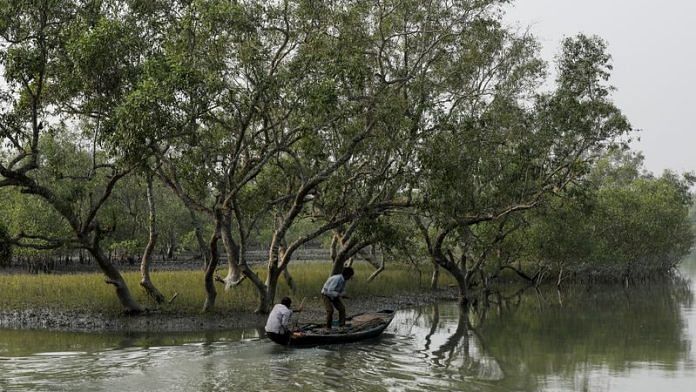New Delhi: India’s move to relax regulatory oversight of forest areas by modifying a 1980 law is drawing protests from environmental activists who fear the changes will lead to unchecked commercial activity and infrastructure development in green areas.
The original law was aimed at curbing the degradation of forest land by requiring the federal government’s permission before any non-forest activity is carried out, or before land in those areas is leased to a private entity for any commercial purpose.
India says the new law is a milestone in “enhancement of the productivity of forests”.
It will require no federal government clearance for some green areas to be used for eco-tourism facilities, such as building government-owned zoos. The government will have the power to allow seismic surveys without scrutiny, which activists fear will lead to commercial exploitation.
Despite concerns of activists and opposition leaders, the law was cleared by a 31-member Indian parliamentary panel, headed by a lawmaker from Prime Minister Narendra Modi’s party, though five lawmakers dissented. Both parliament houses cleared the law in recent days and it will next go to the president for approval.
Activists, however, are continuing to raise concerns, with some even exploring a legal challenge.
“There is enough evidence of human-induced climate change around us. In such a scenario investing in protecting our forests rather than making forest diversion easier should have been the sensible choice,” said Bahar Dutt, a New Delhi-based conservation biologist.
India’s government has defended its position. It maintains change to the law were required to fast track strategic and security related projects and also cater “to the livelihood aspirations of the local communities.”
The government says there are no blanket exemptions in the law and it will help local communities connect with “the mainstream of development.”
India’s environment ministry, which has drafted the changes, did not respond to Reuters queries.
KEY PROJECTS VS ACTIVIST FEARS
In recent weeks, protesters including children, tribal groups and activists have organized silent demonstrations in many states, some standing in forests holding placards reading the law will “destroy wildlife habitat”, social media posts show.
Opponents say India’s new law will also change how it defines forests, and so it will apply to fewer green zones, leading to about 20-28% of existing forest cover losing regulatory protection.
“This law is susceptible to a legal challenge as the changes introduced dilute the existing safeguards,” said Debadityo Sinha, who leads Climate & Ecosystems team at Delhi-based think tank Vidhi Centre for Legal Policy.
Bhupender Yadav, India’s minister for environment, forest and climate change, told parliament on Wednesday the law needed to be tweaked as it was difficult for the government even to build toilets inside schools covered by forest area protections.
The new law would also make it easier for India’s government to construct strategic projects “of national importance and concerning national security” within 100 km (62 miles) from international borders, especially in biodiversity hotspots in India’s northeast.
Such changes, critics say, could lead to excessive construction in the pristine tourist hotspot of Kashmir and other hilly forests in Himalayan states.
“This not only affects the ecology in the Himalayan and north-eastern regions, but also the livelihoods of those communities living at the margins,” Jairam Ramesh, India’s former environment minister and member of opposition Congress party, wrote in a post on Wednesday.
(Reporting by Arpan Chaturvedi; Editing by Aditya Kalra and Kim Coghill)
Disclaimer: This report is auto generated from the Reuters news service. ThePrint holds no responsibilty for its content.
Also read: Assam to plant one crore saplings on Sep 17: Himanta



